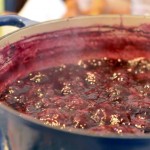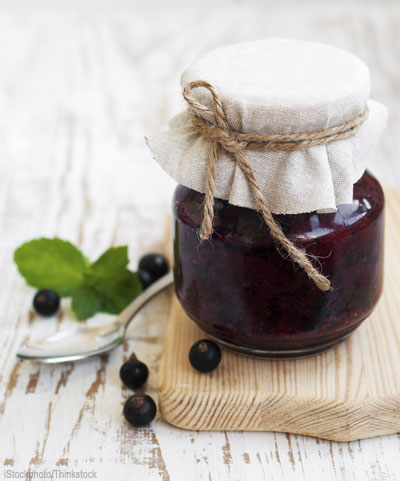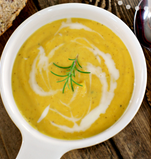Summer holidays are almost upon us. With our abundance of beautiful lakes and rivers in Canada, fishing is a popular summer activity. Fish contain polyunsaturated fats called Omega-3’s, these are a healthy fat offering many health benefit. Yes, ‘healthy fats’. Mono and Polyunsaturated fats are encouraged in small amounts for healthy functioning. Fat is required for the body to absorb the fat soluble vitamins A, D, E and K. There are three types of Omega-3 fats:
EPA & DHA (eicosapentaenoic acid and docosahexaenoic acid)
Lowers risk of heart disease Reduces blood pressure and inflammation Helps arteries from becoming stiff and preventing blood clots Lowers fats in the blood Important for brain and eye development in infants and during pregnancy.
Sources of these Omega-3 fats are: Salmon, sardines, trout, herring, Arctic char, mackerel, krill and anchovies
ALA (α-linolenic acid)
Source of healthy fats, however, does not improve heart health as much as EPA and DHA.
Sources of these Omega-3 fats are found in plant oils such as: Walnuts, flax, chia and hemp seeds, canola, soybean, walnut and flaxseed oils and soybean products.
Omega-3’s are found in animal and plant sources. Fatty fish are the best source in your diet. Canada’s Food Guide recommends at least 2 servings of fish per week. If you are vegetarian, vegan or just don’t like fish, you may benefit from an Omega-3 supplement. If you have a fish or shellfish allergy, kelp or seaweed supplements are also available.
Monounsaturated fats are also important for good health. They’re found in olive oil, canola oil, peanut oil, non-hydrogenated margarine, avocados and some nuts such as almonds, pistachios, cashews, pecans and hazelnuts.
Remember to still have these good fats in moderation.
]]>

April is here and warmer weather is following. Which means more produce is in season, making them fresher, more nutritious and readily available. The consumption of fruits and vegetables provide us with many nutrients essential for good health. Canada’s Food Guide recommends 7 to 10 daily servings of fruits and vegetables for adults. Meeting these general requirements will help meet your needs for vitamins, minerals and other nutrients like fibre.
Consuming the recommended servings also helps reduce the risk of obesity, type 2 diabetes, heart disease, certain kinds of cancer and osteoporosis.
Not everyone likes fruits and vegetables even if they are aware of their health benefits. This can lead to struggles with meeting nutritional requirements. In light of April Fools Day this month we invite you to Fool your Food with Hidden Veggies! We have lots of tips and tricks to get your daily servings even if your not a fan of produce.
Challenge yourself to get your daily servings of fruits and vegetables with these tips and tricks:
- Purée vegetables into tomato and pasta sauces.
- Grate vegetables into burger patties.
- Add shredded zucchini or carrots to baked goods.
- Use applesauce instead of sugar when baking. 1 cup = 1 cup
- Use avocado in place of mayo. Avocados contain mono saturated fat which when used in moderation can reverse insulin resistance and lower ‘bad’ cholesterol!
- Avocado is also great as a mousse for dessert. Just whip it up with some cacao powder. Delicious!
- Use jackfruit in your tacos in place of meat. It looks like pulled pork and tastes like whatever you put in it!
- Shred cooked spaghetti squash and use as spaghetti.
- Instead of butter in your cookies try using banana. 1 cup = 1 cup
- Squeeze fresh lemon or orange juice into stir-fry sauces.
- Crush cauliflower in a food processor and add to rice and pilaff dishes.
- Add greens like kale or spinach to a smoothie.
- Grate or dice veggies into omelettes, scrambles eggs, quiches.
- Add citrus fruits or berries to water. Cucumber and mint also go nicely while adding nutrients and flavour to water.
There are so many ways to get creative when cooking, the possibilities are endless. Recipes can always be modified and who knows, maybe you’ll end up inventing something spectacular.
Have fun cooking!
]]>1. Wake and Cake – Recent studies linking dark chocolate consumption to positive health benefits may encourage more consumers to indulge in the a.m.
2. Dosha Dining – Turmeric has really been picking up steam and trending over the past couple years… People have widely accepted turmeric is this magic food. And that’s really the holy grail of Ayurveda; for every dosha, turmeric is a good balancing additive for food.
3. Plant butchery – Plant butchery really focuses in on the fact that meat eaters are exploring plantbased options. There is a growing number of people who don’t want to eliminate meat from their diet but might want to eat it less often
4. Food Waste Frenzy – Creatively reducing food waste by repurposing typically tossed-out stems, skins and rinds. For example, watermelon rinds being made into pickles, or making cauliflower rice using the stem, something that ordinarily would end up in the garbage.
5. Snackin’ Sardines – Sardines have gotten a bad rap, but present-day trends support a move to the protein-rich fish.
6. Noodle on This – The fresh preparation method of hand pulled noodles offers showmanship, authenticity and an artisanal craft way of eating focusing on technique.
7. Mocktail Mixology – Mocktails are getting a modern makeover, with such offerings featuring fresh-pressed juices, flavored teas, sipping vinegars and muddled herbs and spices. They are certainly a fav in our cooking classes
8. “Goat” Get It – the next hot protein to hit plates, goat has much less fat than most other forms of meat, and there is a rise in goat’s milk products. Also, the bone broth craze is really sweeping the nation for the collagen in the bone broth, which is said to have magical properties for your joints and your brain and your gut. Goat actually has the highest level of interstitial collagen.
9. Cook and Connect – Whether its apps like EatWith that connect cooks with hungry strangers or fleet-farming, a movement allowing gardeners to farm another’s lawn in exchange for a cut of the produce sales. It’s a way to bring people together through the desire to create their own local agriculture.
10. Migratory meals – Refugee populations are planting culinary flags in their new home countries, inspiring unique fusions of flavor and heritage. We’re not just talking about hummus and kebabs but the more delicate flavours of pomegranate, sour cherries, sumac, fenugreek, orange blossom. To read the full article, click on Ten Cutting Edge Food Trends.
For more on trends in the food world for the year ahead, check out our collection on our Pinterest Board. Whether you are trying out the new trends or sticking with the “tried and true”, may there be many delicious meals in your future filled with love and fulfillment.
Bon Apetit!
]]>1. Bison Tagine is a rich stew with fruit and vegetables that are slow cooked. Serve with couscous or brown rice for a hearty meal packed with warm flavours.
2. Best Squash Soup is like a warm hug on those chilly nights. It will be a new family favourite in no time.
3. Apple Compote with Buckwheat Flake Crumble is that traditional family recipe with a modern twist. Apples are readily available year round so this recipe is super easy and delicious any time of year! The vanilla sauce is a delicious cream-like accompaniment.
There is no right or wrong with comfort foods, these are the most popular ones from our Recipe Box. Take a look, maybe you’ll find a new recipe that gives you comfort!
Be sure to check back often as we regularly post new recipes from our cooking classes.
]]>At this time of year, we all like to indulge and it’s easy to consume many rich and caloric foods because “that’s what you do during the holidays”! It is also possible to enjoy highly flavourful and satisfying foods that are nutrient dense, providing our bodies what they need to give us the energy and feeling of wellbeing over the holidays. Here are our tips:
* Use whole foods such as whole grains, vegetables & fruit, lean protein, legumes, to provide energy from complex carbohydrates that keep your blood sugar in check;
* Eat smaller meals throughout the day, instead of “saving yourself” for a large/heavy meal. This is easier on your digestive system and reduces likelihood of gas and bloating;
* Drink water between meals, as opposed to during meals as water can dilute digestive juices, slowing digestion;
* Aim to contribute a healthy dish when visiting others, or when hosting others so you know there is at least one dish can snack on without hesitation;
* Be cautious with “creamy” ingredients. Raw cashews are a great substitute for a creamy effect while providing excellent nutrition;
* Ensure you are consuming dietary fibre (e.g. whole grains, fruit, vegetables, legumes) to keep the digestive system regular during what can become atypical eating patterns;
* Balance “acid forming” foods (e.g. sugar, alcohol, meat, cheese) with “alkaline forming” foods such as lemon and dark, leafy greens;
* Keep an eye on portion sizes;
* Pre-eat before an event (something with protein and vegetables to stabilize blood sugar levels) to reduce the likelihood of overeating at the event; and
* Take time to enjoy the food, so as to eat less and avoid feeling bloated and uncomfortable.
We wish you a most joyful season of entertaining!
 As you turn the page on the calendar, we are just that much closer to celebrating the glory of Autumn. We believe you can never be too old to enjoy carving of pumpkins so here’s
As you turn the page on the calendar, we are just that much closer to celebrating the glory of Autumn. We believe you can never be too old to enjoy carving of pumpkins so here’sour tips to carving the perfect pumpkin.
1. When purchasing your pumpkin take a look at the rind. A lighter color means softer flesh that’s easier to carve in detail.
2. Any bruises, cuts or soft spots can mean the pumpkin is already on the decline and won’t last much longer.
3. Pick up the pumpkin, it should feel somewhat light, meaning it’s nice and hollow inside.
4. Now that you’ve got your pumpkin, select your tools for carving. A boning knife – sharp,
thin and pointed – is a good choice for carving small details. Use a large carving knife to
cut out the lid. If you are putting a real candle inside your jack-o-lantern, make a couple of
air holes in the back of the pumpkin.
5. What is Halloween without a little goo! Reach inside the pumpkin and pull out the stringy
guts and slimy seeds. Don’t just throw those seeds. Rinse the seeds and toast them on a
baking sheet then sprinkled with seasonings. Delicious!
6. Use a large spoon and scrape the inside of the pumpkin completely to expose the lightcolored
flesh, which reflects more light.
7. If you’re attempting a detailed design, print or draw your design on paper first. Then
lightly trace the design through the paper or use pin pricks to outline the design onto the
pumpkin. Use the tip of your knife to carve out the design.
8. Avoid burning the inside of your pumpkin by placing your tea light candle inside a glass jar.
9. If you are keeping your jack-o-lantern indoors sprinkle the insides with cinnamon, nutmeg and cloves and it will infuse those fall scents in the room.
Happy Halloween!
]]> Sure, we all get excited for summer’s bounty of sweet berries and juicy watermelon, but there’s more to fall than Halloween costumes and hay rides. From September to November, the autumn harvest brings a variety of healthful and delicious produce, from squash and sweet potatoes to apples and pears.
Sure, we all get excited for summer’s bounty of sweet berries and juicy watermelon, but there’s more to fall than Halloween costumes and hay rides. From September to November, the autumn harvest brings a variety of healthful and delicious produce, from squash and sweet potatoes to apples and pears.While almost all produce can be grown somewhere year-round, trucking produce across the country (or across the world) isn’t easy. Buying local seasonal produce not only potentially reduces our carbon footprint and helps local economies, but it may also result in more nutritious produce.
So why not dig into fall fruits like apples and cranberries, which offer essential vitamins and
antioxidants that slow aging and may help fight cancer? On the veggie side, the entire cruciferous
family-that’s the cabbage, rutabaga, and cauliflower gang-is in season and offers a compound known
as glucosinolates that may also have cancer-fighting potential. And who could forget about squash?
These big, bright gourds offer healthy alpha- and beta-carotene, which promote good eyesight.
To get the best of what fall has to offer, check out top autumnal produce picks from Kelly Fitzpatrick at www.greatist.com that are both delicious and super healthy, and keep track of what’s in season near you. Also don’t be afraid to try something new. (Who knew leeks or figs would taste so good?)
Apples
These sweet, crunchy fall favorites are packed with antioxidants, which may help prevent chronic
illness and slow aging. Among popular apple varieties (and there are more than 7,500 different types!),
Fuji apples have the highest concentration of phenolics and flavonoids, while Cortland and Empire
apples have the lowest. Quince, a floral-flavored cousin of the apple, is also at its best in autumn and
can be added to jams, jellies, and desserts-but it is inedible raw.
Beets
They may be available year-round, but beets are at their best in the fall. Besides the familiar reddish purple color, you can also find golden, white, and even multicolored beets. When shopping, look for firm, smooth bulbs and (if attached) bright, crisp greens. Toss the greens in salads and roast the beets for their betaine-a compound that may help prevent heart and liver disease-and nitrate, which may
increase blood flow to the brain and potentially reduce risk of dementia.
Brussels Sprouts and Cabbage
Packed with vitamins A and C, cabbage and its mini-me, Brussels sprouts, boast high concentrations
of cancer-fighting glucosinolates (which also lend these veggies their distinct flavor). Try this easy
Brussels sprouts scramble for a savory start to your day.
Cranberries
Between the size of a blueberry and a grape, cranberries taste their best October through November,
though only 5 percent actually make it to the fresh produce section (the other 95 percent are dried,
canned, or turned into juice). Research suggests cranberry concentrate can help prevent urinary tract
infections and that fresh cranberries can help prevent oral diseases and slow the growth of cancer.
Pears
These sweet fruits fall into two major categories: European and Asian. The European varieties, Bosc
and Bartlett, are most common, and grow on the west coast during fall. Pears are high in soluble fiber,
which helps lower “bad” (LDL) cholesterol. To get that daily dose of fiber and to satisfy a sweet tooth,
snack on the fruit whole or incorporate into recipes from filling breakfasts to healthier cocktails.
Pomegranates
Held sacred by many ancient religions, pomegranates have health benefits that have only been
recognized more recently (POM juice, anyone?). While much of the research has been inconclusive,
some studies suggest the fruit’s antioxidants may reduce the risk of cardiovascular complications like
heart attacks. Early studies also suggest that pomegranate may help prevent breast and colon
cancers, though results are far from conclusive. These labor-intensive fruits can be a hassle to deseed,
but we figured out the best way to do so. Ah, victory is sweet.
Pumpkins
Though technically a member of the squash family, with their rich history and health benefits (plus their
essential role in Halloween festivities), pumpkins earn their own spot on our list. Pumpkin is one of the
best sources of alpha- and beta-carotene, which can be converted into retinol to promote healthy vision
and cell growth. Pumpkin seeds are also a good source of alpha-linolenic acid, an omega-3 fatty acid
that may help those with heart disease, high blood pressure, or high cholesterol. Toast them up for a
deliciously nostalgic treat!
Rutabagas and Turnips
These root veggies aren’t winning any beauty pageants with their bulbous shape and occasionally hairlike roots, but what they lack in looks they make up for in nutrition. Research suggests eating turnips
and rutabagas may help reduce the risk of prostate and lung cancers. What’s more, turnip greens are
a source of calcium, and one cup of raw rutabaga offers a respectable three grams of fiber.
Squash
Squash is the poster food for autumn. Summer squash are still available locally until October in some
parts of the country, and winter squash begin to crop up (pun intended) as summer squash heads out.
The gourd family offers varieties including acorn, butternut, and delicata squash, as well as spaghetti
squash and its pasta-like strands.
Sweet Potatoes
These orange beauties have the best flavor during fall, their peak season. Like squash, sweet potatoes
are rich in beta-carotene, which can prevent vitamin A deficiencies, promote healthy eyesight and
generate retinol production. Sweet potatoes are also a good source of vitamin C, and when eaten with
their skin on, a medium tater can pack nearly four grams of fiber.
Enjoy Fall’s bounty, happy eating!
]]>Enjoy August with a few hikes in our gorgeous mountains, meadows and lakes. Lace up
your hiking shoes and fill your picnic backpack with some of these easy, sure-not-to-spoil
foods from the good people at Picnic Foods!
Cold grain salads
Skip over the typical greens and make a salad with a bit more punch. Because they are
packed with protein and will give you a great energy boost, couscous and quinoa are
both excellent options. Both grains cook by boiling in salted water. When cooked
through, spread the grain out flat on a baking sheet and refrigerate for 20 minutes.
During that time, prepare the rest of the salad. Try chopping a bell pepper and rinsing
canned black beans as easy addition to the salad that add lots of vitamins and protein.
For the dressing, mix some lime or lemon juice with a bit of olive oil. This salad won’t
wilt so the dressing can be added at home. Prepare the dish the night before and
store it in a lightweight plastic container.
Panini
Substitute deli meat for a Portobello mushroom which have a high amount of protein to
help re-energize you and you don’t have to worry about them spoiling on your hike.
Grill the Portobello before putting it on your sandwich. Opt for Parmesan or Swiss
cheese, since hard cheeses do not have to be refrigerated. Put a cheese slice on each
piece of bread; as the cheese melts in the Panini, it will act as “glue” so your
sandwich won’t fall apart while you are hiking. Wrap the sandwich in foil and pack it to
go!
Grapes
Grapes are a great treat for after lunch. They don’t require refrigeration, and there’s no
peel or core to worry about after you eat. Plus, they are mostly water, so you’ll be
rehydrating yourself by snacking.
Trail mix
If you make your own trail mix, you can throw in any of your favorite treats. Sunflower
seeds, walnuts, cashews, almonds, and pecans are all typical stables of trail mix.
Think about adding dried versions of some of your favorites fruits, like banana chips,
dried cranberries, or sweetened dried blueberries. If you know a sugar craving could
hit you on the trail, add M&M’s rather than chocolate pieces, which are more likely to
melt.
Happy Hiking!
 As you begin your journey into canning season this summer, you will notice that recipes to can high acid foods require the use of non-reactive cookware and utensils. It is a topic of great discussion at our canning classes. Here is a great explanation by canning expert Marisa McClelland www.foodinjars.com:
As you begin your journey into canning season this summer, you will notice that recipes to can high acid foods require the use of non-reactive cookware and utensils. It is a topic of great discussion at our canning classes. Here is a great explanation by canning expert Marisa McClelland www.foodinjars.com:
Whether you’re an expert canner, a beginner or someone who’s just contemplating dipping their toe into the home preservation waters, you’re certain to have heard that the only foods safe for water bath canning are the high acid ones. We define high acid as a food that’s got a pH of 4.6 or below (the lower the pH, the higher the acid content). The acid content of jams, preserved fruits, chutneys, pickles and more are our balm as canners, because it’s what keeps those preserves safe in their jars until you determine it’s time to crack them open.
There’s only one precaution that you must take when cooking these high acids foods into their canning-ready state. You’ve got to make sure you use a cooking vessel that is non-reactive. Pots made from metals like aluminum and untreated cast iron react with the acid in the preserves and can leach a metallic flavor into your final product.
Note: The one exception here is when it comes to traditional copper preserving pans. Copper is a reactive metal, but when fruit and sugar are combined and cooked in a copper pan, the metallic flavor is not leached into the finished product.
Non-reactive pans are ones made of either stainless steel or enamel-lined cast iron (think Le Creuset or similarly enameled Dutch/French ovens). If you’ve got a stash of aluminum pots and want to give them some role in your canning process, you can always press the big ones into service as processing pots.
]]> We are commonly asked in our canning classes whether honey or other natural sweeteners can used in place of sugar when making jam or other preserves. The short answer is ‘yes’ but it does change the product and the product does not have the same shelf-life as preserves made with sugar. The Hobby Farm magazine has a great article 8 Natural and Healthy Canning Substitutions that offers substitutions for sugar, pectin and alum. Here is the excerpt as it relates to sugar substitutions:
We are commonly asked in our canning classes whether honey or other natural sweeteners can used in place of sugar when making jam or other preserves. The short answer is ‘yes’ but it does change the product and the product does not have the same shelf-life as preserves made with sugar. The Hobby Farm magazine has a great article 8 Natural and Healthy Canning Substitutions that offers substitutions for sugar, pectin and alum. Here is the excerpt as it relates to sugar substitutions:
Cooks often want to know if they can use sugar substitutes when making jams and jellies or
canning and preserving fruits. Honey, agave nectar and stevia can all be used in canning recipes, but most experts advise against replacing all of the sugar in a recipe with a substitute.
“You can’t just replace honey for sugar, cup for cup,” says Eugenia Bone, author of Preserved: Recipes and Techniques for Putting Up Small Batches of Seasonal Foods. “It is a preservative, but it doesn’t dehydrate the fruit cells, which retards the growth of spoilers, in the same way as sugar.” Honey can be substituted for up to half of the sugar in a recipes. If a recipe calls for 5 cups of sugar, add 2½ cups sugar and 2½ cups of honey. (Some people suggest using slightly less honey so 1 cup sugar equals about 7/8 cup honey). You still need sugar in the mix for preserving purposes. Using honey in jams and jellies might affect how long the product is processed and how well it gels. Because honey doesn’t dehydrate fruit as much as sugar, the final product might be runny; plus, the honey can overpower the fruit’s flavor if you’re not careful. To replace sugar with honey, look for recipes that have been specifically formulated-and approved-for honey, or use Pomona’s Pectin, Bone advises.
Agave nectar can be used in the same manner as honey. Powdered stevia is also an option, but you should use no-sugar pectin or Pomona Pectin when using stevia.
Looking for more natural substitutions? Read the full article in Hobby Farms. Making your
own preserves, natural or refined sugar, allows you to get the flavours you want and know
exactly what is in your food. So, enjoy summer’s bounty of fresh produce and be sure to store
some away for later in the year.

